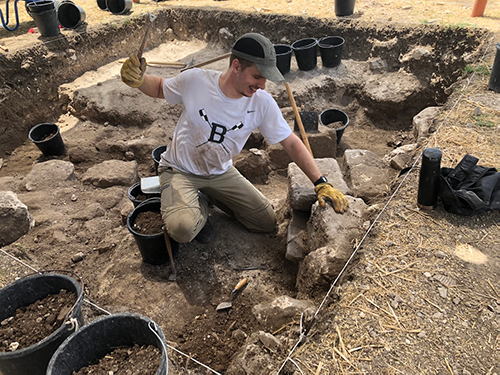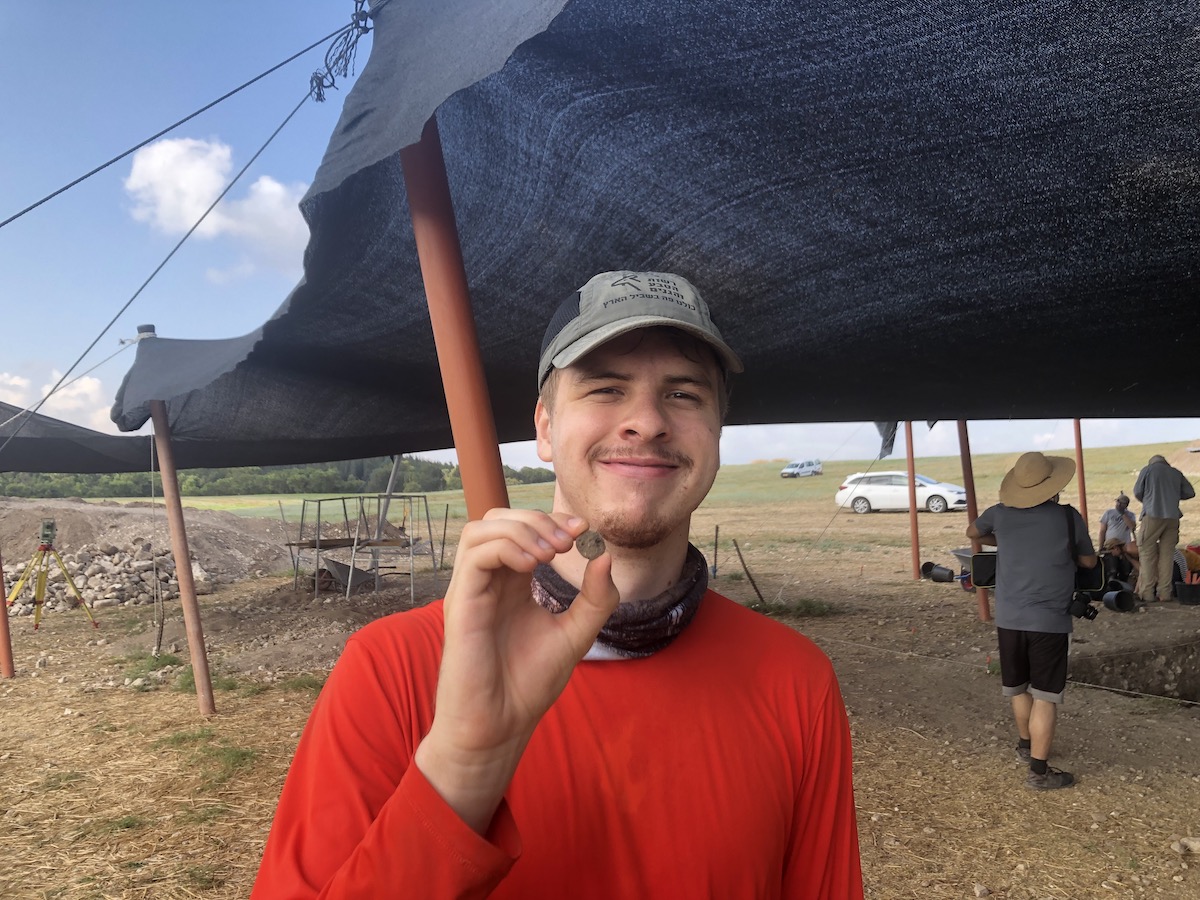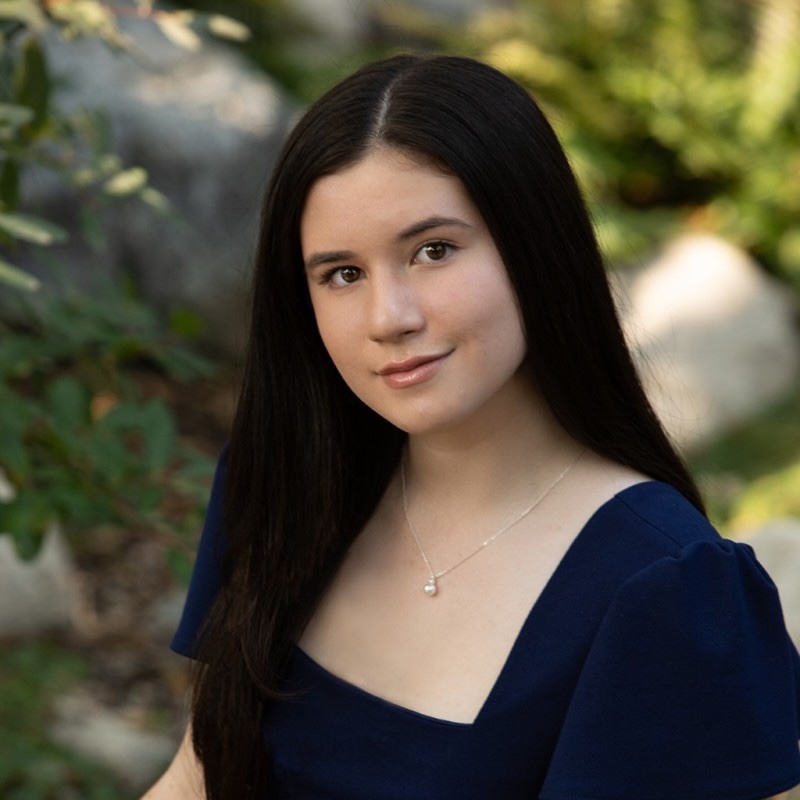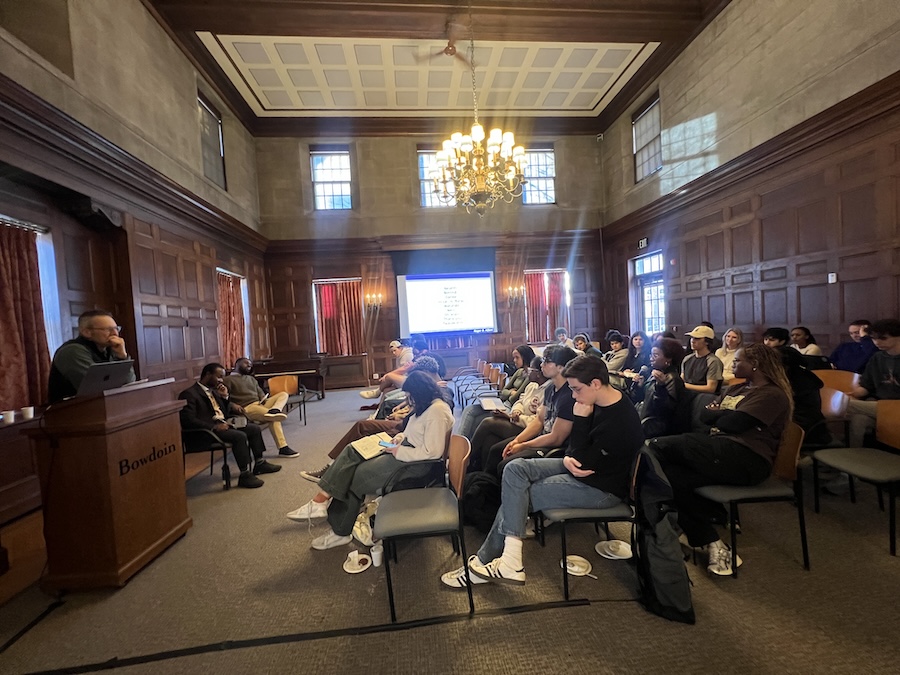Cole Crawford ’20 Helps Excavate Important Legionary Base in Israel
By Rebecca Goldfine
This summer, Cole Crawford ’20 joined an international team of archaeologists, students, and volunteers to help exacavate the legionary base. He was funded with a grant from Bowdoin, the Alumni Council Internship Award in Memory of Maurice Littlefield ’41. Crawford expressed his appreciation for the funding: With it, "Bowdoin let me have this amazing experience in Israel," he said.
The site is near Tel Megiddo in the Jezreel Valley, and is the first Roman legionary base to be found so far east. Archaeologists and historians had long suspected a Roman military camp once dominated this region, but they lacked the evidence that would offer a richer understanding of the Roman occupation. So the discovery of a legionary encampment several years ago, hidden under a field of crops in northern Israel, sent ripples through the archaeology world.
A religion and history major who has focused his studies mainly on colonial and nineteenth-century American history, Crawford said he was drawn to the excavation for the chance to learn more about a far-off region and its past. "It's a crash course in Roman history!" he said, adding with a laugh, "I'm a little out of my comfort zone."
The Romans constructed their large, well-organized base in Galilee during the first century. Then the army settled in for the long haul, staying through the fourth century. "The base was run for hundreds of years, and was at a crossroads where people were moving north, south, east, and west," Crawford said.

The military station housed thousands of "Ironclads," fighters in the Sixth Legion. Rome depended heavily on its legions; each acted as an independent unit, a complete army unto itself. The Sixth Legion's task was to secure Rome's position in the area, guard imperial roads, and maintain order. It was also likely involved in quelling Jewish uprisings.
The dig Crawford joined lasted just four weeks—four scorching, dusty weeks. Around forty people, ages 19 to 75, flew in from around the world to help open up a new section of the site around the principia, a large complex at the center of the base.
Their work began each day at 4:30 a.m. and ended at 1:00 p.m., to avoid the hottest part of the day. Much was discovered: Crawford alone found a piece of an amphora, used for storing wine; pieces of marble tesserae, once part of a mosaic; coins, and pieces of pottery. When the Romans eventually abandoned the base, they leveled it and covered the remains with crushed pottery to prevent it from being used by others. Crawford also helped uncover a sewer, wall, road, and gutters.
Throughout the dig, Crawford and the other volunteers lived at a nearby kibbutz. "It is a beautiful place, very comfortable, with lots of good food," he said. "The Jezreel Valley is a gorgeous area. It looks like California, my home state."
After the dig wrapped up, Crawford moved to Jerusalem to continue assisting the W. F. Albright Institute of Archaeological Research, which is overseeing the project, with processing data and archiving materials unearthed from the dig.
"Jerusalem is a fascinating place," he said. "It's a powerful city, with a lot going on. It's like a living history, and you're walking in the steps of people who have walked here for thousands of years."





